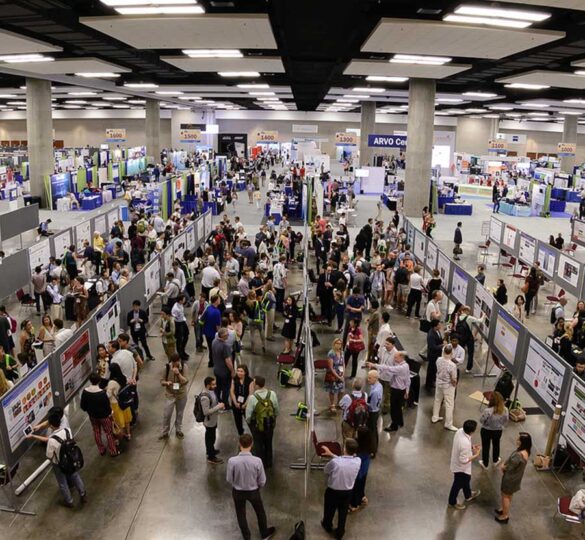President’s Report from ARVO 2018
ARVO is the annual meeting of the Association for Research in Vision and Ophthalmology.

Glaucoma Research Foundation President and CEO, Thomas M. Brunner, reports on the state of glaucoma research in 2018.
Gene Therapy Highlight of ARVO
Each year I attend ARVO to learn about the latest glaucoma research and connect with our friends and supporters. Each year I come away excited about the potential to make a real difference in glaucoma research.
This year was no exception. What made it so exciting was the progress in understanding the genetics of glaucoma and eye disease, and translating that knowledge into treatments to prevent blindness. Following is a brief recap of some of the highlights of the meeting.
Gene Therapy Now FDA Cleared for a Blinding Childhood Disease
The first evening at ARVO got things off to a great start. I attended a dinner/symposia on gene therapy sponsored by Spark Therapeutics. They developed the first FDA-cleared gene therapy for human use. It’s really a proof of principle, and it’s for a blinding childhood disease, Leber’s Congenital Amaurosis or LCA. It’s a single injection into the eye which inserts a missing gene that then provides a protein essential for vision. Children born without the gene gradually lose their vision and are blind by the time they’re teenagers. After injection, vision is restored and preserved.
The opportunity for glaucoma is to create a gene therapy for congenital and childhood glaucoma. These are also single gene diseases which can be screened for, and might yield to gene therapy. As we learn more about the genetics of glaucoma, the opportunities for gene therapy seem huge.
Gene Editing Another Major Advance
Another highlight was an evening Keynote address by Jennifer Doudna, Phd, from UC Berkeley. She’s credited with the discovery of CRISPR gene editing technology. She gave an amazing presentation on how her observation of bacteria’s ability to kill invading viruses by cutting their genes led to the concept of harnessing this technique to edit the genome. Using CRISPR technology, it’s possible to edit out mutant genes and even insert the correct gene.
In just six years the CRISPR technology has moved from the lab to widespread use in agriculture. The implications and ethics for human use were also discussed. The possibility of using CRISPR to treat glaucoma seems very real and is part of the enthusiasm for our next Catalyst for a Cure research collaboration focused on vision restoration.
Glaucoma Research Foundation Well Represented
There were many sessions on genetics, neuroprotection, regenerative medicine, vision restoration, and imaging. It was great to see so many scientists funded by Glaucoma Research Foundation presenting papers and posters and chairing sessions on important advances in glaucoma research.
Current and former Catalyst for a Cure principal investigators who presented at this year’s ARVO included David Calkins, PhD (Chair of the GRF Research Committee), who co-chaired a session on the health of the retinal neurons. Nick Marsh-Armstrong, PhD presented his widely-recognized research on how nerve cells are damaged in glaucoma. Jeff Goldberg, MD, PhD, Alf Dubra, PhD, and Vivek Srinivasan, PhD each had multiple papers, posters, and presentations at the meeting. Important research from GRF Board member John Flanagan, PhD, FCOptom, on Lipoxin-B4 and its neuroprotective effect, was presented by one of his colleagues.
All in all, it was a very productive meeting which helped me realize the tremendous impact that Glaucoma Research Foundation provides as a catalyst for glaucoma research, and the equally important opportunities and challenges that lie ahead. The next five to ten years in glaucoma research are going to be an exciting time of dramatic change, leading to vision restoration and even cures for certain types of glaucoma.
First posted June 1, 2018; Last reviewed June 22, 2022

Thomas M. Brunner
Tom Brunner is the President and CEO of Glaucoma Research Foundation (GRF) in San Francisco, California. He joined GRF in 2003 after a successful 30-year career in the ophthalmic laser business.